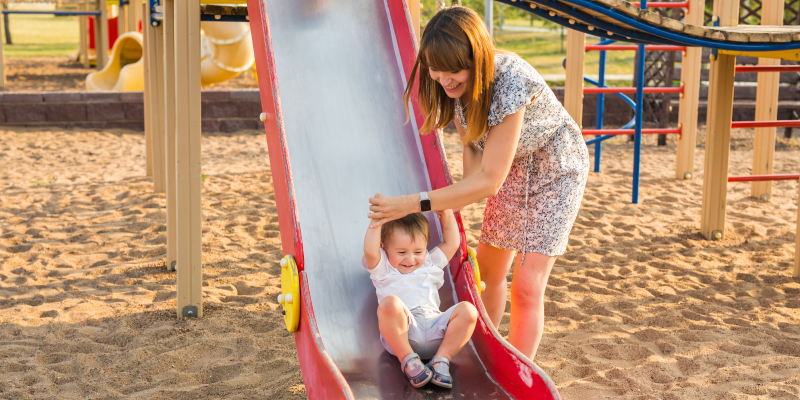
New AAP Rules on Slides Parents Need to Know
It’s summer! And aside from summer vacation, the thing kids love to do most in the warmer weather is play outside. When you’re playing outside with your child, it’s important to keep your kid safe at all costs. Kids love playing at the playground, but there are often hidden dangers lurking amidst the seemingly safe equipment. The American Academy of Pediatrics recently came out with a new set of guidelines involving slides. If you think it sounds ridiculous, we assure you it’s not. Here are the new AAP rules on slides every parent needs to know.
Overview of the new guidelines
Before you get to the top of a slide and settle your toddler on your lap, hold on (no pun intended). The new guidelines the AAP came out with advises every parent against doing this. Why? You don’t know how easily an accident can happen. Between 2002 and 2015, a study showed that 352,698 children under age 6 were injured on slides. And toddlers 12 to 23 months have the highest percentage of injury—most commonly a lower leg fracture. What parents don’t realize is how quickly and easily this can happen: a child’s foot can catch on the way down. What normally is an incident that can be corrected on their own is magnified by the force of an adult’s weight. The result? A broken bone. Most parents say that if they would have known this could happen they would have never done it.
Safety tips and what you should do instead
So what can they do instead? For starters, be extra careful. Kids should ride down slides by themselves without parents. Make sure the slide is in the best possible condition before your child goes down. If your child is younger than pre-school age, he should not go down a slide that is higher than five feet tall. And if he’s in school already, the maximum height of the slide should be no greater than six feet tall. Be wary of the day’s temperature, too: plastic and metal slides can burn kids’ delicate skin after scorching in the sun all day. Another thing to watch for is whether the slide is lying flat against the ground or if there’s a small drop-off. Avoid a slide with a slight drop-off as this could injure a child’s tailbone or hit their heads on the way down off the slide. A slide lying flat against the ground gives children the best possible chance at a smooth ride and no bouncing up. The last things to check around slides and playground equipment is the ground around them. Are there any broken pieces of glass or wood sticking up anywhere? Make sure these pieces are disposed of before your child plays. And the ground around the slide should be covered with wood chips, sand or a cushioned ground covering. It helps cushion a fall or for the adventurous kids who likes to jump off slides. Giving the playground a quick inspection before your children play is the best way to protect them and keep your mind at ease.
While your kids are playing, be sure to keep a lookout for any possible danger that could harm them or any other child, and let your local park know if you see items that need to be fixed or replaced. This is the best way to ensure your kids have the time of their lives at the park and also ensure that you can sit a bit calmer knowing your child is safe while playing.
Join the other 100,000+ new parents who love Bitsy Boxes.

